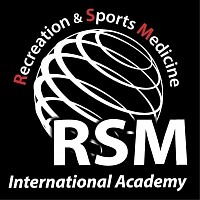Sports Medicine Massage Course
Mastering Sports Medicine Massage for Future Professionals
The RSM Sports Medicine Massage Course is the most advanced and professional hands-on training program, designed for those who have completed prior RSM massage courses to refine their expertise.
🔸 This course focuses on understanding overuse syndromes and identifying root causes through biomechanics and kinetic chain analysis. It provides top-tier techniques for pain relief and postural correction, tailored to individual client needs.
Course Fee & Schedule
🔸 Designed for massage therapists working with top athletes and medical rehabilitation clients, this course focuses on advanced techniques and biomechanics tailored to client-specific needs.
🔸 Cost: 16,000 THB
(Dynamic Myofascial Release + Sports Medicine Massage Course)
🔸 Duration: Monday - Friday (15:10-16:10)
(immediately after Trigger Point Therapy Course)
🔸 Total: 26 hours
🔸 Prerequisites:
This course requires prior completion of the following 3 core RSM massage courses:
1. Trigger Point Therapy
2. Deep Tissue Massage
3. Dynamic Myofascial Release
Advanced Kinetic Chain Assessment and Manual Therapy:
Integrating Functional Anatomy and Sports Medicine Approaches
The course begins with an in-depth review of symptoms from the three main courses, covering kinetic chain assessments and functional anatomy associated with pain and overuse syndromes. It introduces dynamic postural assessments for different posture patterns and hands-on advanced manual therapy techniques to address pain and injuries arising from kinetic chain dysfunctions.
🔸 Students will develop proficiency in dynamic postural analysis, functional anatomy, and advanced techniques, enabling them to effectively manage pain and overuse syndromes through targeted sports medicine approaches.
Mastering Dynamic Postural Diagnosis for Effective Massage Protocols
Dynamic postural diagnosis is essential for creating accurate massage protocols. Static assessments often lead to errors, as they overlook movement-related factors causing pain and dysfunction. At RSM International Academy, dynamic assessments take priority, helping you identify movement patterns and their impact on posture, injuries, and pain. This ensures a deeper understanding of each client’s unique needs.
🔸 These insights enable you to customize massage techniques, delivering treatments tailored to address each client’s unique needs effectively.
Advanced Stretching Techniques for Optimal Joint Mobility and Injury Prevention
This course introduces advanced stretching techniques designed to target specific muscles without affecting surrounding areas, ensuring precise and effective results. By learning to identify which muscles require stretching and which should remain stable, students can avoid overstretching unintended areas. This method improves joint mobility, enhances range of motion, and restores balance through controlled mobilization and alignment techniques.
🔸 Participants will gain the skills to address muscle imbalances, optimize movement, and align joints effectively. These techniques enable therapists to deliver targeted treatments that improve functional performance and mobility for their clients.
Massage Techniques for Kinetic Chain Optimization and Pain Relief
Joint flexibility and kinetic chain dynamics are essential for identifying pain-avoidance postures and addressing compensatory movement behaviors. This course focuses on detailed assessments of ascending and descending kinetic chains through techniques such as pre-stretch evaluations, passive and active stretching, and proprioceptive neuromuscular facilitation (PNF). Participants will explore the root causes of conditions like snapping scapula and snapping hip joint, often linked to muscle imbalances and restricted joint mobility.
🔸 Students will develop targeted massage protocols for both sports performance and rehabilitation purposes, enabling them to address pain-related postural adaptations, optimize movement, and improve joint alignment effectively.
Sports Medicine Massage for Elder Care and Rehabilitation
This course emphasizes age-specific massage techniques, focusing on orthopedic approaches tailored to the unique needs of elderly clients. As aging often leads to noticeable changes in gait patterns, posture, and skeletal structure, participants will learn to assess and address these factors effectively. Techniques include gentle methods to alleviate pain, enhance joint mobility, and improve muscular function while considering occupational and movement history.
🔸 Students will gain specialized skills to provide tailored treatments that accommodate age-related changes, promote comfort, and support functional movement, helping elderly clients maintain a better quality of life.
Course Overview
RSM's Sports Medicine Massage Training is an advanced program meticulously designed for massage therapists and healthcare professionals aiming to deepen their expertise in addressing posture, movement dysfunction, and pain relief. This training particularly focuses on overuse injuries, biomechanics, and kinetic chain dysfunction in athletes, utilizing techniques like Trigger Point Therapy, Deep Tissue Massage, and Dynamic Myofascial Release. The course is ideal for enhancing the application of these methodologies in improving joint mobility, alleviating neuromuscular tension, and aiding rehabilitation.
Joint Mobilization and Biomechanics:
Enhancing Flexibility and Preventing Nerve Compression
We focus on joint mobilization techniques like HVLA and LVLA to restore joint capsule flexibility and alleviate nerve compression. Understanding the biomechanics of movement helps you treat misalignments and compensatory patterns that lead to overuse injuries. These techniques also help optimize joint movement and prevent nerve entrapments, crucial for improving mobility and overall performance.
Balancing Global and Inner Muscles:
Advanced Techniques for Muscle Dysfunction and Fascia Release
This section emphasizes the balance between global muscles (superficial) and inner muscles (deep). Dysfunctions in these muscle groups often cause fascial distortion and nerve entrapment. You will learn advanced fascia release techniques to correct these imbalances, promoting smooth muscle glide and optimal joint function, while preventing injuries associated with compensatory movements and joint instability.









